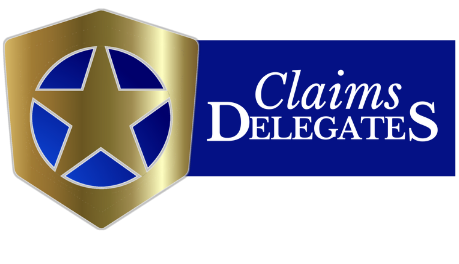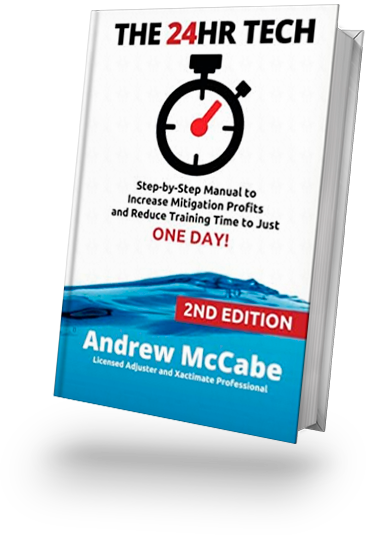
The TPA Trade-off: First Notice of Loss (FNOL)
[In order to remain strong and viable into the next version of the restoration industry, contractors must change their mindsets and approach to the market. The RESTORATION2.0 Movement advocates changes to six main areas of contractors’ businesses. FNOL is one of them.]
Why do we put up with third-party administrators? These so-called “programs” were put in place for one reason (officially), but we all know what the real reason is.
The “official” reason is to “ensure a better customer experience.” Sure, so why is it that TPAs interact so little with the actual customers? Fact is, contractors and “vendors” deliver the customer experience, so THEY are the ones being managed.
TPAs enforce their program rules ONTO vendors and service providers. Their SLAs (service level agreements) were not designed to deliver better service. These contracts and rules were designed for a completely different goal: reduction of claims severity.
Someone please explain to me how reducing claims severity translates into a better customer experience. The metrics and surveys which point to a “better experience” through reduced cycle times, were designed with the answer in mind – before the question was asked.
I will admit that the less time customers have to actually interact with TPAs and claims departments, the happier they are. That doesn’t mean that reduced cycle time is the best tool to use in order to create satisfied customers.
No, claims departments and carriers have know the truth for a very long time; the shorter the cycle time, the smaller the claim. Small settlements DO NOT necessarily mean happier customers. But we contractors are still playing along with the charade. Why?
I believe the main reason restoration contractors (and body shops and doctors for that matter) still play around with TPAs, HMOs and the like, is because they either 1) don’t know how to get their own customers or 2) can’t see another way of doing business.
It’s all about F.N.O.L. : First Notice of Loss.
 You see, service providers have been spoon-fed customers for so long, they’ve forgotten how things worked BEFORE managed repair programs.
You see, service providers have been spoon-fed customers for so long, they’ve forgotten how things worked BEFORE managed repair programs.
Since the carriers, and then programs receive a large percentage of losses FIRST, they are perceived as the holders of the keys. Once contractors get used to having their jobs just appear every day/week, they get lazy and forget how to feed themselves.
Then, just when the contractor has hired staff and added capacity, the program turns off – or goes away completely. Now what?
The new battlefield of restoration is FNOL. He who gets the call first, gets to call the shots. If you caught the fish, would you continue to let someone else tell you how to gut and cook it?
The RESTORATION2.0 Movement is all about helping contractors become more self-sufficient, in order to survive and thrive into the coming next version of insurance repairs. Make no mistake, the future of our industry will look VERY different from today, and likely unrecognizable to some of the old guard.
When it comes down to it, you as a contractor are paying for every lead that comes in the door, no matter the source. First notice of loss will not come easily. Incumbant networks and carriers are actively fighting every day in order to maintain their positions as the “first call” from insured property owners.
They have been telling us contractors for years that without their “programs”, we would all starve. At the same time, they have built up huge organizations to “administer” the claims process. They get First Notice, then sell it to contractors with a markup. So, in a way, we are paying for the privilege of paying for leads… twice.
Now the smart among us understand that there is always an alternative. If you’re going to pay for leads, shouldn’t you understand the FULL costs of every option? Google Adwords is one of my favorite alternate lead sources.
Let’s break down an example of TPA “program” work versus Google Adwords.
Most “managed repair” program fees start at 5% of gross revenue. (We won’t talk about CodeBlue because their fees start at 20%). That means that for every dollar of sales, you give five cents to the TPA – pre-tax.
If your sales volume is $1mm, that means you are paying the TPA $50,000 a year ($4,166/mo) in exchange for these leads. On the surface, this doesn’t sound unreasonable. After all, a full-time sales person is going to cost AT LEAST that much before commissions and overhead expenses. But the up-front fee is only part of the story.
Managed Repair also means managed PRICING. Program contractors are forced to agree to the carrier-specific pricing schedule. In most cases, this means the off-the-shelf Xactimate pricelist for your region. Those of us who know (and teach Xactimate pricing courses), understand that the “standard” pricing from the monopoly-in-Orem makes zero consideration for contractor overhead or profit.
The prices from Xactimate are inclusive of contractors’ COSTS only. It is a very detailed and thorough pricing and estimating system, but it is up to the user (you, the contractor) to customize it to their specific business needs and goals. Xactimate will not tell you how much overhead your business has, nor what an appropriate profit margin for you is. How could they without price fixing?
Smart, proactive contractors understand this and revise their pricing accordingly. If the regional pricelist has zero profit or business overhead built in, then they must build it in. My clients are increasing their pricing by 20-36% depending on their individual needs. And no, there is no rule or law against this. It’s called being a contractor.
If we take our hypothetical $1mm annual revenue and add the Pricelist Penalty of 15% (a conservative guess of what you could be charging if you weren’t on the program), your revenue should have been $1,150,000. Or, put another way, you only made $850,000 compared to your non-managed peers who made a million. Oops, make that $800,000 after the TPA fee.
But wait, we’re not done. There’s also the Program Penalty to consider; aka “We don’t pay for that” rules and guidelines.
How many things can you name off the top of your head that the non-licensed-adjusters at the TPAs say they “don’t pay for” or are “included in your overhead”? I’ll take a quick stab at it:
- Mask and Prep for paint
- Emergency Service Calls
- Mileage or Travel Time
- Equipment monitoring and decontamination
- Daily progressive cleanup
- Professional services like testing, engineering and estimating
- Anything above “standard quality” materials
- O&P on “one trade” projects
- Any drying beyond three days
- And on, and on…
What do you believe these things add up to as a percentage of revenue? Can we agree that it is AT LEAST 5%? That’s another $50,000 drag on your top-line revenue.
Finally, there’s the Admin Tax for performing managed repair work. This is the added staff and time needed to administer the program and adhere to the SLAs (service level agreements) and maintain KPI dashboards. Many of you will recognize the POMS scores from programs like Contractor Connection.
The majority of companies I’ve worked for and consulted with have hired at least one full-time person to their administrative staff in order to remain compliant with the various TPA programs they were on. Often I see a dedicated division of people whose sole responsibility is to maintain the button-pushing and paper-processing involved in operating in the managed repair environment.
Let’s pick a fairly conservative Admin Tax rate of 3%. That adds another $30,000 in burden to your business to remain compliant in the TPA environment.
For those of you playing at home, we’re now at a total operations cost of $280,000 (15% Pricing Penalty + 5% TPA fee + 5% Program Penalty + 3% Admin Tax) for the simple pleasure of servicing the managed repair program. All those “steady claims files” are starting to look a little pricey, aren’t they?
So what’s the alternative? There are many that I cover in my RESTORATION2.0 course, but today we’re talking about Google Adwords.
What is Google Adwords? Here’s a little snippet from the interwebs. Bottom line: Adwords is a great way to generate leads and get FNOL.
As you can imagine, if it were easy or cheap then everyone would be doing it. But it IS effective. There are national franchise restorers who spend six-and-seven figures monthly on the Google Adwords platform. That doesn’t mean that YOU have to spend $50,000 a month in order to replace the current TPA lead stream you enjoy.
Let’s use a round number of $5,000/mo for your Adwords budget. I know this is higher than the $4,166/mo TPA fee, but I need some round numbers. Keep in mind that we are trying to replace actual revenue of $720,000 – our revenue after fees and burden in a managed repair environment.
While no two ad campaigns are alike or 100% predictable, we can expect a $5k spend to generate about 35 leads per month. If you close 60% of those leads (and really, who couldn’t?) that is a NET of 21 jobs per month.
The average water claim of $3,500 means you could expect revenues on closed jobs of $73,500 per month for an annual revenue of $882,000. Subtract the $60,000 in advertising and you’re at $822,000. That’s a full $102K MORE than your expected post-TPA revenue of $720k.
And that is all before you land that big $250k rebuild or $65k dry-down.
And that’s really it. No program rules, no referral fees; just you fishing for your own work – then eating what you catch.
What happens when a catastrophe hits your area? Turn off your ad campaign. You won’t be forced to take on more work than you can handle. Rest assured: there will NEVER be enough restoration contractors to handle the crap when it hits the fan.
Need more volume? Turn up your ad spend. Period.
This business doesn’t have to be as complicated as we’ve made it out to be. We can simplify our businesses AND make for profit. It’s just the R2.0 way.
If you would like to learn more, and join the movement yourself, check out one of our upcoming courses:
R2.0 class in L.A. and DFW.
Change the industry by changing your business.
Adwords Info: http://unitedrestorers.com/solutions/adwords-management/
https://www.theppcmachine.co.uk/
Check My Math: https://drive.google.com/file/d/12mamko_iwJPOYA9rH3OT6I5zLbAkZ-B-/view?usp=sharing



 You see, service providers have been spoon-fed customers for so long, they’ve forgotten how things worked BEFORE managed repair programs.
You see, service providers have been spoon-fed customers for so long, they’ve forgotten how things worked BEFORE managed repair programs.






